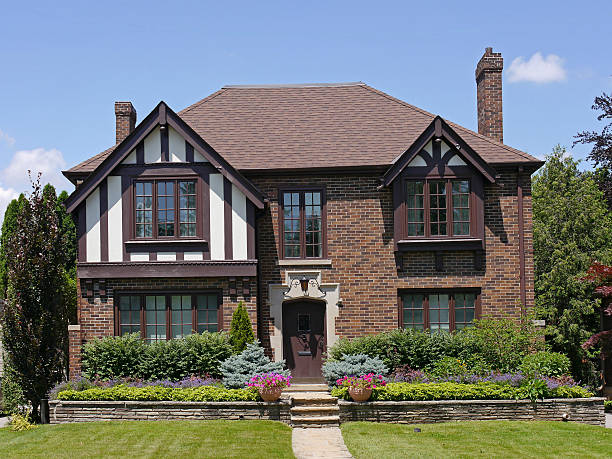"Modernizing Tradition: The Resurgence of Tudor-Style Architecture in Today's Homes"
As we navigate the labyrinth of modern interior and exterior design trends, an unexpected player has made a surprising comeback in the field. The age-old Tudor architectural style, known for its distinctive half-timbering and steeply pitched roofs, is experiencing a renaissance in contemporary home design. This article delves into the history of Tudor-style architecture, its modern interpretation, and how it blends tradition with functionality in today's homes.

A Brief History of Tudor Architecture
Originating in the 16th century during the Tudor period in England, Tudor-style architecture is known for its distinctive features like half-timbering, steeply pitched roofs, and tall, narrow windows. It was designed to be sturdy and functional, with an aesthetic appeal that still captures hearts today. While the style fell out of favor in the 17th century, it experienced a revival in late 19th and early 20th century America, particularly in residential architecture.
The Modern Resurgence of Tudor Architecture
The 21st-century revival of Tudor architecture transcends nostalgia, offering a unique blend of old-world charm and modern functionality. Contemporary Tudor homes maintain the iconic exterior characteristics but are often combined with open, airy interiors. High ceilings, abundant natural light, and spacious layouts are common features, providing the perfect canvas for modern design elements.
Practicality and Market Trends
One of the key reasons for the resurgence of Tudor-style architecture is its compatibility with modern living standards. The style’s emphasis on sturdy construction, functional design, and aesthetic appeal align with the preferences of today’s homeowners. Additionally, the market demand for homes with a unique character and history has played a significant role in the style’s comeback.
Enhancing Daily Living with Tudor Architecture
Contemporary Tudor homes offer a unique living experience. The blend of traditional and modern design elements creates a warm and inviting atmosphere. The style’s signature features like exposed wooden beams and leaded glass windows add a touch of historic charm, while modern amenities ensure comfort and convenience. From the cozy fireplace in the living room to the modern gourmet kitchen, every element contributes to enhancing daily living.
Conclusion
The resurgence of Tudor-style architecture in modern home design is a testament to the timeless appeal of this historic style. Its unique blend of tradition and modernity offers homeowners a distinctive, comfortable, and aesthetically pleasing living experience. As we continue to explore new design trends, the enduring charm of Tudor architecture reminds us of the beauty in melding the old with the new.




